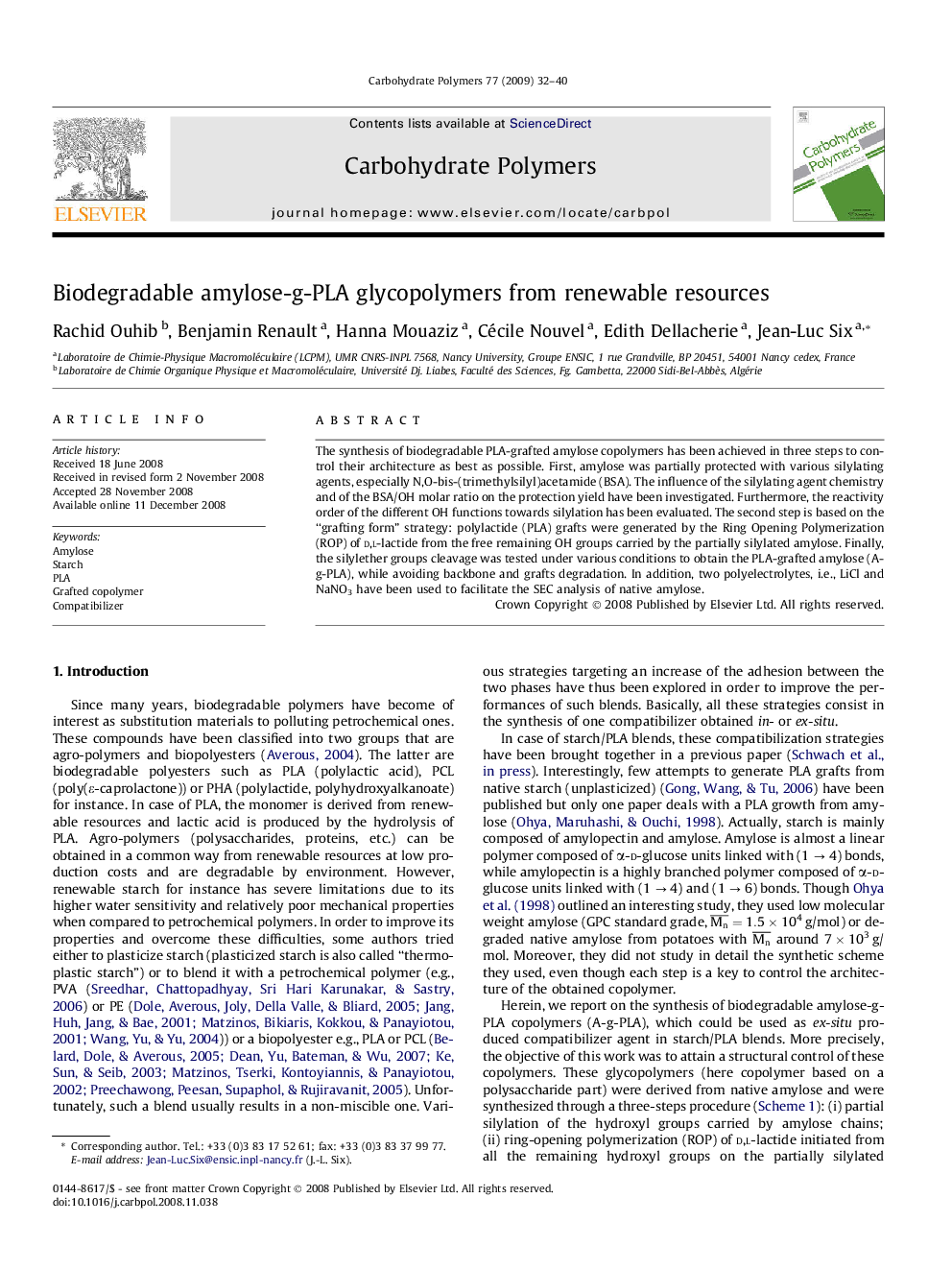| کد مقاله | کد نشریه | سال انتشار | مقاله انگلیسی | نسخه تمام متن |
|---|---|---|---|---|
| 1386203 | 982481 | 2009 | 9 صفحه PDF | دانلود رایگان |

The synthesis of biodegradable PLA-grafted amylose copolymers has been achieved in three steps to control their architecture as best as possible. First, amylose was partially protected with various silylating agents, especially N,O-bis-(trimethylsilyl)acetamide (BSA). The influence of the silylating agent chemistry and of the BSA/OH molar ratio on the protection yield have been investigated. Furthermore, the reactivity order of the different OH functions towards silylation has been evaluated. The second step is based on the “grafting form” strategy: polylactide (PLA) grafts were generated by the Ring Opening Polymerization (ROP) of d,l-lactide from the free remaining OH groups carried by the partially silylated amylose. Finally, the silylether groups cleavage was tested under various conditions to obtain the PLA-grafted amylose (A-g-PLA), while avoiding backbone and grafts degradation. In addition, two polyelectrolytes, i.e., LiCl and NaNO3 have been used to facilitate the SEC analysis of native amylose.
Journal: Carbohydrate Polymers - Volume 77, Issue 1, 22 May 2009, Pages 32–40